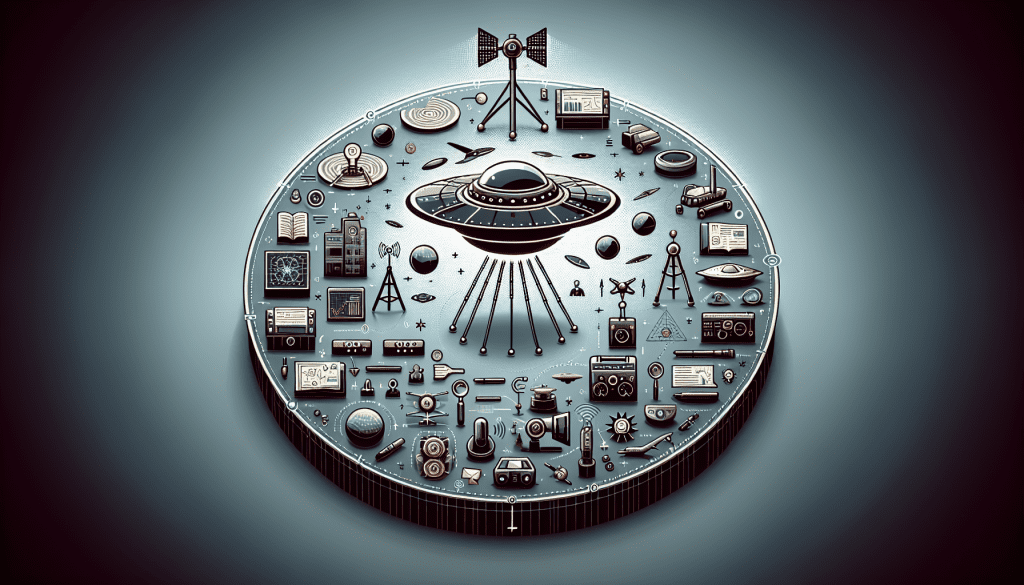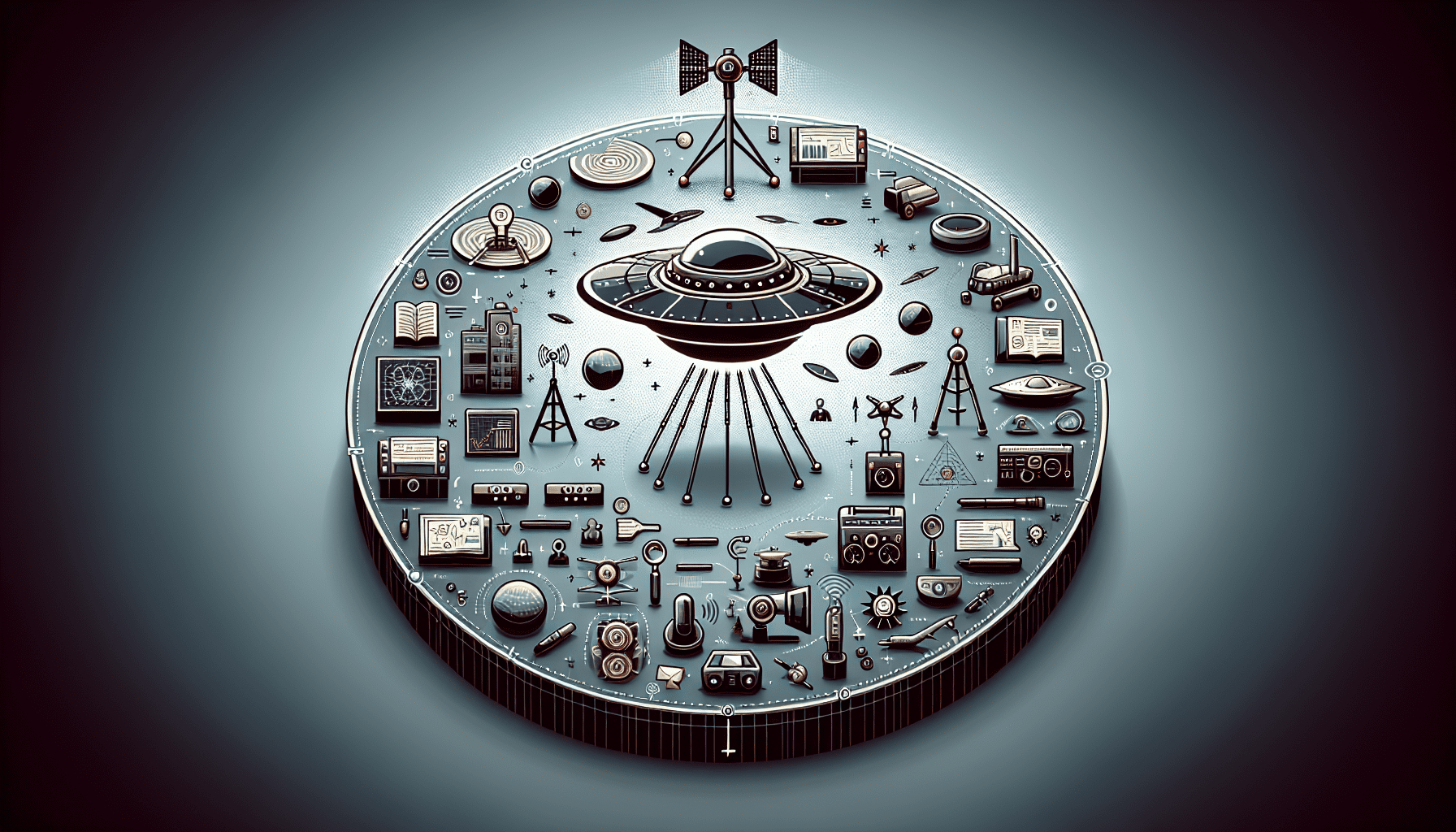If you’ve ever wondered about the existence of extraterrestrial life, you are not alone. The question of whether we are alone in the universe has captivated humanity for centuries. Fortunately, building a UFO detector is easier than you may think. In this article, you will learn step-by-step instructions on how to construct your very own UFO detector, providing you with a fascinating avenue to potentially witness and document unexplained phenomena in the night sky. So, grab your tools, channel your inner curiosity, and let’s get started on this out-of-this-world adventure!

Materials and Equipment
To build a UFO detector, you will need a range of materials and equipment. Here is a list of what you will need to get started:
Components
- Resistors
- Capacitors
- Inductors
- Transistors
- Integrated circuits
- LEDs
- Phototransistors
- Antennas
- Circuit boards
Tools
- Soldering iron
- Wire cutters and strippers
- Multimeter
- Power supply
- Oscilloscope
- Screwdrivers
- Drill
- Digital calipers
- Heat shrink tubing
- ESD-safe work mat and wrist strap
Understanding UFO Phenomenon
Before diving into the world of UFO detectors, it’s important to have a basic understanding of what UFOs are and their historical significance.
What are UFOs?
UFO stands for Unidentified Flying Object. It refers to any airborne object or phenomenon that cannot be readily identified by human observers. While many UFO sightings turn out to have logical explanations, some remain unexplained and continue to intrigue researchers.
Historical Accounts
UFO sightings have been reported throughout history, with recorded accounts dating back centuries. Historical documents and eyewitness testimonies attest to strange aerial phenomena witnessed by people from different cultures and time periods, sparking curiosity and speculation.
Scientific Research
Scientific research into UFO phenomena seeks to better understand the nature of these unexplained aerial sightings. Researchers use various methods, including data collection, analysis, and empirical studies, to investigate the possibility of extraterrestrial life or advanced technological advancements.
Principles of UFO Detection
To detect and study UFOs, it is crucial to employ appropriate detection methods. Here are three common principles used in UFO detection:
Electromagnetic Detection
Electromagnetic detection involves detecting and analyzing electromagnetic radiation emitted or absorbed by UFOs. This method relies on the principles of electromagnetism to capture and interpret signals that may indicate the presence of UFOs.
Infrared Detection
Infrared detection utilizes thermal imaging technology to detect variations in temperature. UFOs often exhibit different thermal signatures compared to the surrounding environment, making infrared detection a valuable tool in identifying unidentified flying objects.
Radio Frequency Detection
Radio frequency detection involves monitoring and analyzing radio waves emitted by UFOs. By analyzing the frequency and characteristics of these radio waves, researchers can gather information about the presence and behavior of unidentified aerial objects.
Choosing the Detection Method
When selecting a detection method for your UFO detector, several important considerations should be taken into account:
Availability
Consider the accessibility and availability of the necessary components and equipment for your chosen detection method. It is crucial to determine if the required materials and tools are readily accessible before embarking on building a UFO detector.
Feasibility
Assess the technical feasibility of the detection method based on your knowledge and skills in electronics and engineering. Some methods may require a higher level of expertise, while others may be more beginner-friendly. Choose a method that aligns with your abilities and level of experience.
Electromagnetic Detection
One of the most popular methods used in UFO detection is electromagnetic detection. Here’s a breakdown of how it works and how you can build your own electromagnetic detector:
Working Principle
Electromagnetic detection relies on the fact that UFOs often emit electromagnetic radiation. By constructing a device capable of capturing and analyzing these emissions, you can increase your chances of detecting and studying unidentified flying objects.
Building an Electromagnetic Detector
To build an electromagnetic detector, you will need a circuit board, resistors, capacitors, transistors, and phototransistors, among other components. By following a schematic diagram and carefully soldering the components onto the circuit board, you can create your own detector.
Calibration and Testing
After building your electromagnetic detector, it is essential to calibrate and test it to ensure accurate readings. This may involve adjusting the sensitivity of the detector and verifying its performance using known sources of electromagnetic radiation.
Infrared Detection
Another effective method for UFO detection is through the use of infrared technology. Here’s what you need to know to build your own infrared detector:
Working Principle
Infrared detection relies on the fact that UFOs often exhibit different thermal signatures than their surroundings. By building a device capable of capturing and interpreting these thermal variations, you can identify potential unidentified flying objects.
Building an Infrared Detector
To construct an infrared detector, you will need an infrared sensor module, microcontroller, resistors, capacitors, and LEDs, among other components. By carefully wiring the components according to a schematic diagram and programming the microcontroller, you can create your own infrared detector.
Calibration and Testing
Once you have built your infrared detector, it is important to calibrate and test it to ensure its accuracy. Calibration involves adjusting the sensitivity and temperature range of the detector to ensure it can accurately detect and differentiate infrared signatures.
Radio Frequency Detection
Radio frequency detection offers another avenue for UFO detection. Here’s how you can build your own radio frequency detector:
Working Principle
Radio frequency detection involves analyzing the radio waves emitted by UFOs. By constructing a device capable of receiving and interpreting these radio signals, you can gather valuable information about the presence and behavior of unidentified aerial objects.
Building a Radio Frequency Detector
To build a radio frequency detector, you will need an antenna, radio frequency module, microcontroller, resistors, capacitors, and a power supply. By following a schematic diagram and carefully connecting the components, you can create your own radio frequency detector.
Calibration and Testing
After building your radio frequency detector, calibration and testing are necessary to ensure accurate detection. This may involve adjusting the receiver’s sensitivity and fine-tuning the antenna’s positioning to optimize signal reception.
Power Supply and Wiring
Once you have built your UFO detector, it is crucial to consider its power supply and wiring to ensure proper operation. Here are some factors to consider:
Power Requirements
Determine the power requirements of your detector, considering the power consumption of each component. Ensure that your power supply can meet the necessary voltage and current requirements for reliable and stable operation.
Battery vs. Electrical Outlet
Decide whether you want to power your detector using batteries or an electrical outlet. Batteries offer portability but may require frequent replacement, while an electrical outlet provides a stable power source but limits mobility.
Proper Wiring
Ensure that all components are correctly wired, following the schematic diagram and guidelines provided. Proper wiring minimizes the risk of electrical issues, reduces signal interference, and ensures optimal performance of your UFO detector.
Enhancing Detection Accuracy
To improve the accuracy of your UFO detector, consider implementing the following techniques:
Signal Filtering
Signal filtering involves implementing filters in your detector’s circuitry to remove unwanted noise and enhance the clarity of detected signals. This can help distinguish genuine UFO signals from interference and improve detection accuracy.
Noise Reduction
Reducing noise interference is crucial for reliable UFO detection. Employ techniques such as shielding sensitive components, using high-quality cables, and implementing proper grounding to minimize external electromagnetic interference.
Signal Analysis
Implement algorithms or software in your detector to perform signal analysis. This can help detect patterns, anomalies, and distinguish UFO signals from background noise, aiding in the identification and analysis of unidentified flying objects.
Data Logging and Analysis
To gather and analyze data from your UFO detector effectively, consider the following:
Choosing a Data Logger
Select a suitable data logger that can capture and store relevant data from your detector. Consider factors such as sampling rate, storage capacity, and compatibility with your detector’s output.
Data Storage and Retrieval
Ensure that your chosen data storage medium can accommodate the volume of data collected by your detector. Implement efficient retrieval methods to access and analyze the collected data conveniently.
Analyzing Collected Data
Take advantage of data analysis tools and techniques to extract meaningful insights from the collected data. By examining trends, patterns, and correlations, you can further investigate UFO sightings and gain a deeper understanding of these phenomena.
With this comprehensive guide, you are well-equipped to embark on building your own UFO detector. Remember to follow best practices, continuously improve your detector’s performance, and contribute to the ongoing exploration of the UFO phenomenon. Happy detecting!

